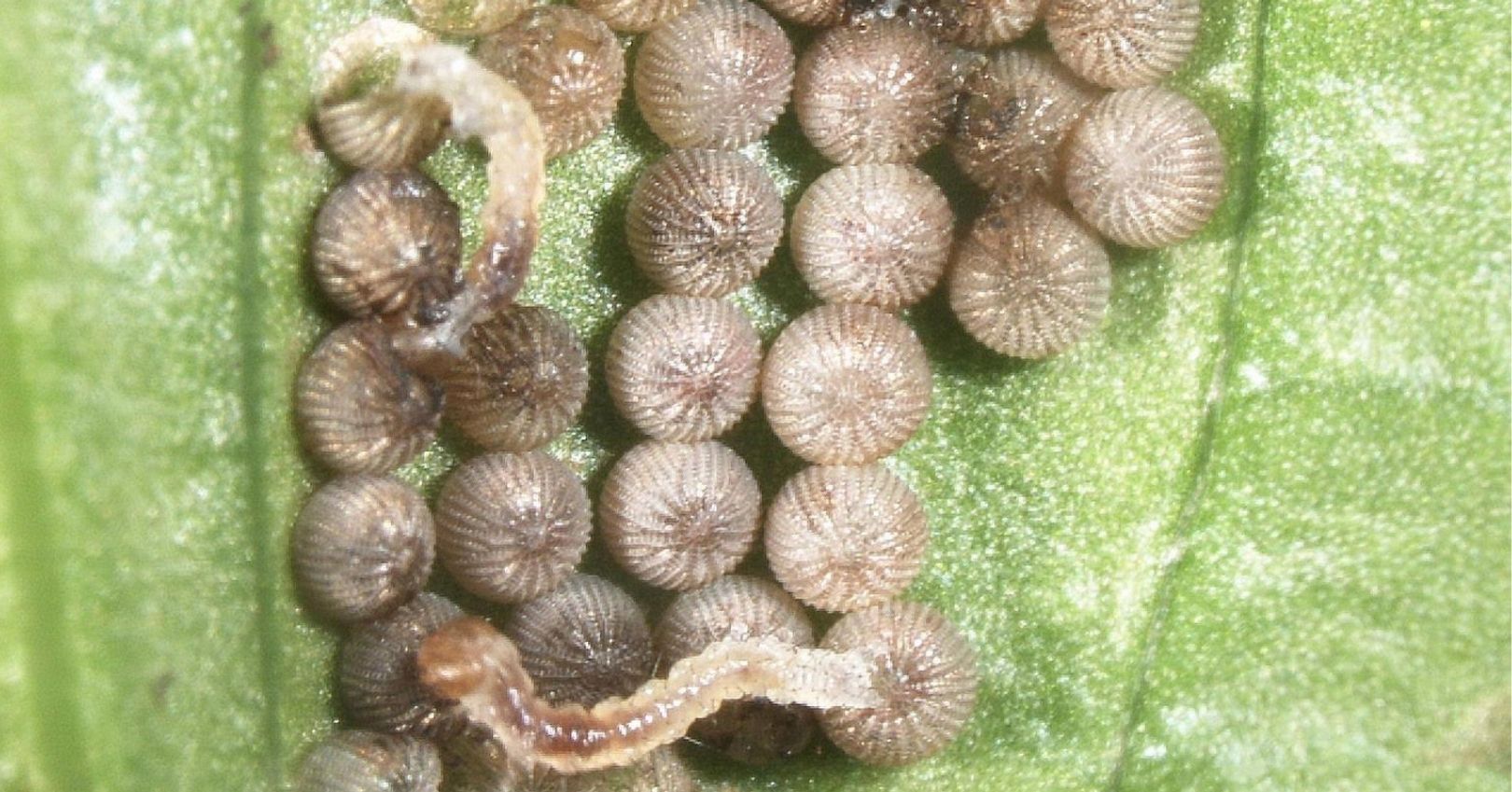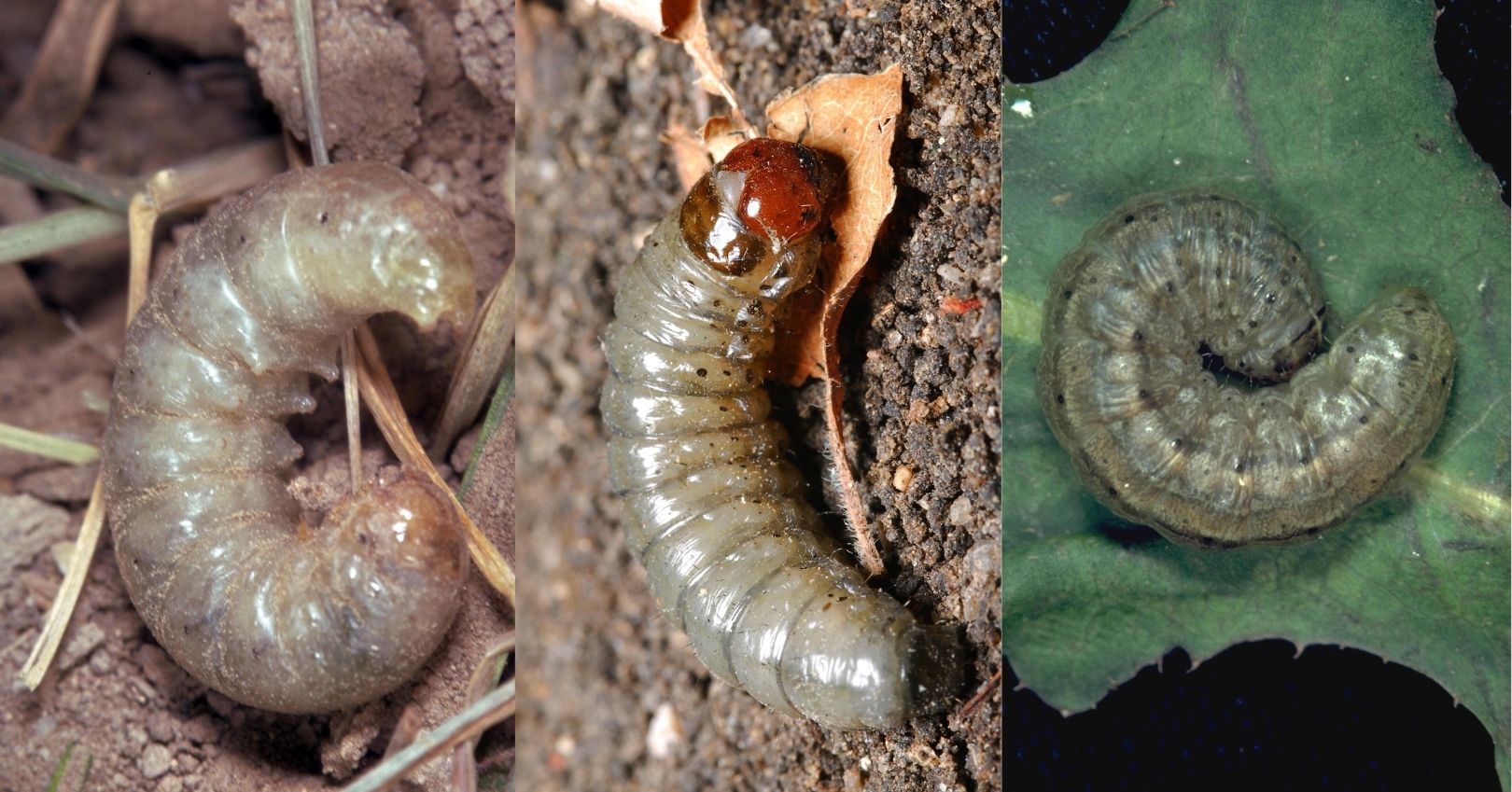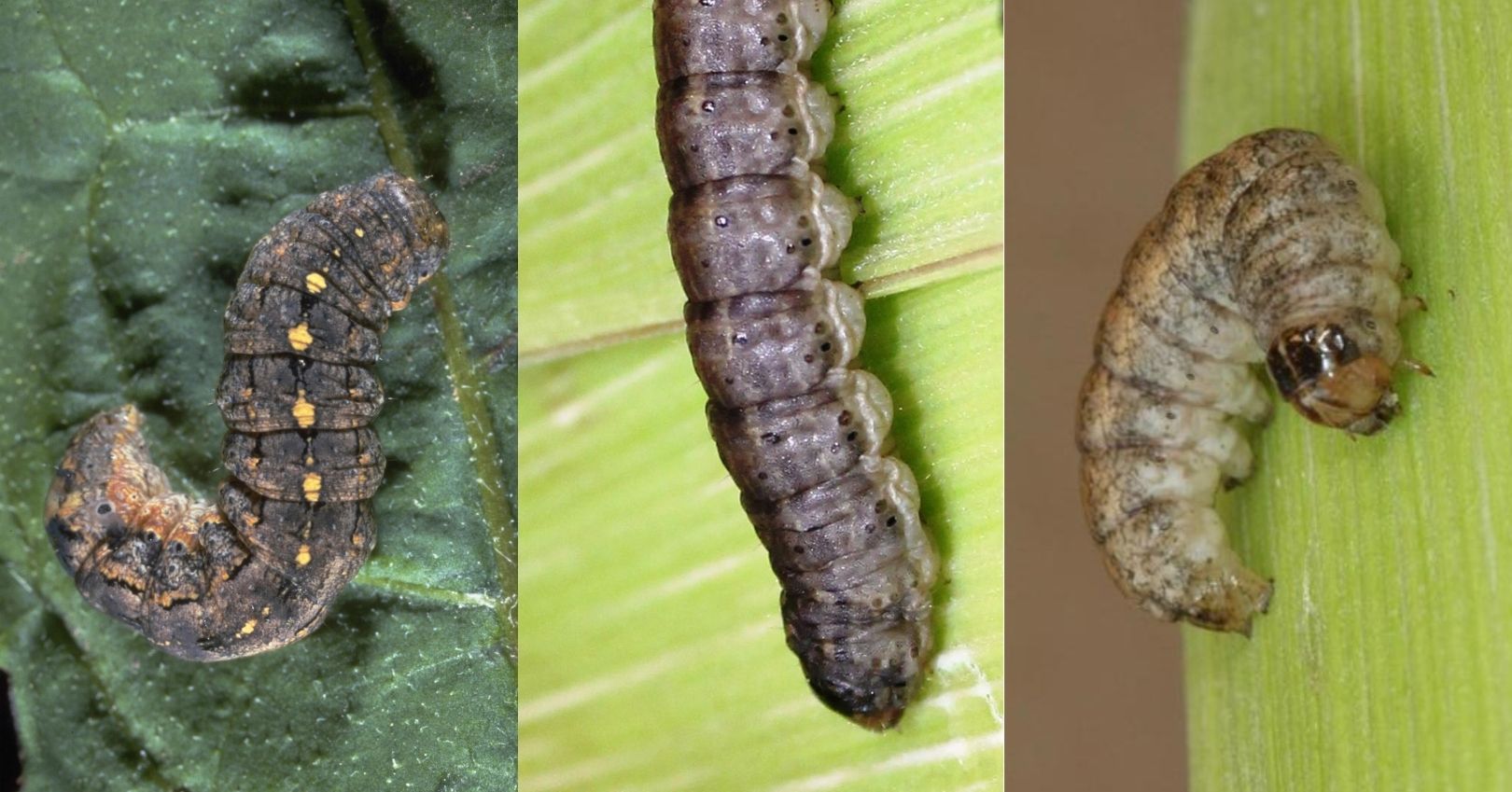Cutworms



Description
Adult: Moths are brown or dark gray with front wings that have irregular bands or spots and lighter-colored hind wings. Average wingspan ranges from 1¼ to 1½ inches.
Egg: Extremely small spherical eggs are white or pale yellow when first laid, changing to brown before hatching. Depending on the species, eggs are laid singly or in irregular clusters of 30-360 on leaves or stems of plants or near the base of the plant.
Larva: Dull gray to brown caterpillars with black stripes or spots. Up to 2 inches long when full grown. Most cutworms curl into a “C” shape when disturbed and during the day, are usually found in dirt clods or just below the soil surface.
Pupa: Dark brown to orange in color with two spines on one end. Sizes range from ½ to 1 inch long.
Life History
Cutworms overwinter as larvae in the soil or under plant debris. In the spring, larvae become active and begin to feed on roots and plant stems. Larvae then pupate in the soil and emerge as adults. Female moths lay eggs on the undersides of leaves and hatched larvae feed on plant foliage, and then pupate in the soil. Some species of cutworms will have a second generation of adults (or more during hotter seasons) that emerge and deposit eggs. Larvae that hatch from these eggs feed until the weather cools and then enter the soil for overwintering. Black and variegated cutworms usually have 2 overlapping generations per year. Army, pale western, and glassy cutworms usually have 1 generation per year.
Damage
Cutworms feed on a wide range of crops. Some plant hosts include: potato, winter wheat, corn, tobacco, asparagus, bean, beet, cabbage, castor bean, grape, lettuce, peanut, pepper, radish, spinach, squash, strawberry and tomato. Cutworm larvae feed at the soil surface and may cut off the stems of young plants during stand establishment. Later in the season, some species can be found feeding on plant foliage which may cause wilting and possibly complete defoliation when infestations are high. Larvae can feed on tubers, causing gouged-out cavities. Tubers that are exposed by soil cracks or those that set very shallow in the soil may be more susceptible.
Monitoring
- Conduct regular scouting for larvae and damage. Monitor early, when seedlings emerge, to detect cutworms when larvae are small. Young larvae are easier to control. Focus on fields with an early season weed infestation, and those planted late. Cutworms preferentially attack these types of fields. When injured plants are found, dig about 1-inch-deep around the base of plants to see if live cutworms are present. Look for wilted plants that may indicate stem feeding injury. Later in the season, monitor plants for foliage damage.
- For black cutworms, use pheromone traps. A threshold of 2 black cutworm moths per trap per day indicates significant egg-laying pressure. Increase field scouting efforts during crop emergence when threshold numbers are met or exceeded.
Management
Cultural
Weedy fields and field borders, and high levels of plant residue provide food sources for cutworms. Thoroughly till crop residues and control weeds to reduce cutworm overwintering and feeding sites. Remove cool-season weeds along field edges to starve young caterpillars. Lambsquarters and wild mustards are attractive host plants for egg-laying. Fall tillage can also help destroy or expose overwintering pupae.
Biological
Many predators, parasites, and diseases attack cutworms, but because cutworms dwell beneath the soil surface, few of these natural enemies are effective in controlling their populations. Bacillus thuringiensis (Bt) products can be effective in controlling young cutworm larvae.
Chemical
The sporadic occurrence of cutworm infestations typically doesn’t support the use of soil insecticides; however, if chronic cutworm infestations have been experienced, or large numbers of overwintering cutworms are observed, insecticides incorporated at planting provides a good preventive strategy. Young larvae at the soil surface will feed on foliage at night; thus, foliar applications in the spring can protect young plants.
Consider treatment options when thresholds reach 2 cuts per 100 seedlings, and 3-7 cuts for older plants (the older the plant the higher the threshold).

